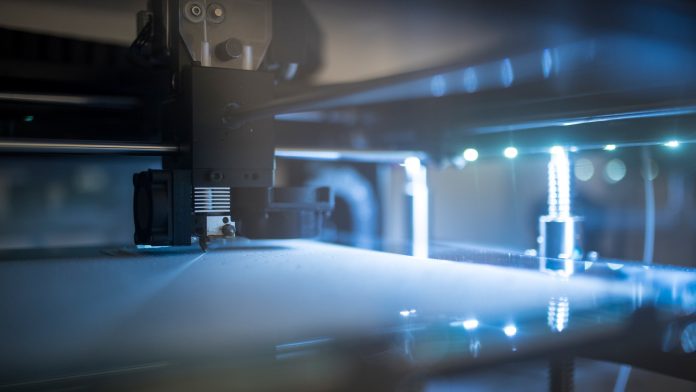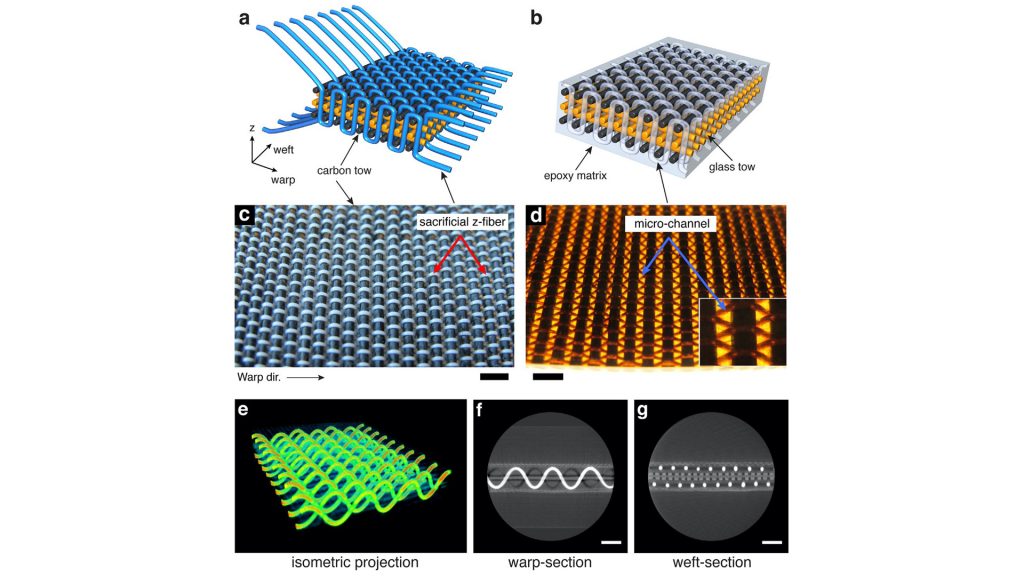Dr Chris Mangun, Director of Advanced Materials at CU Aerospace, explains the benefits and applications of VascTech (Vapourisation of sacrificial components Technology), a unique process to imbue composites with three-dimensional vasculature.
In biological systems, fluid transport through internal vasculature enables a variety of metabolic and homeostatic functions including respiration, circulation, thermal regulation, and self-repair. Natural load-bearing materials such as bone and wood rely on nutrient exchange through vascular networks to achieve cellular proliferation (growth) and tissue regeneration (repair). Fibre-reinforced composites possess comparable structural characteristics to their natural counterparts, but lack the dynamic functionality enabled by hierarchical vasculature. The fabrication of vascular architectures with sacrificial precursors that can also survive stringent manufacturing requirements has been a long-standing challenge.
VascTech is a unique process to imbue composites with three-dimensional vasculature. This enabling technology has been commercialised by CU Aerospace (CUA), located in Champaign, Illinois, USA. VascTech has been expanded from high strength fibres (typically with diameters of 300-500 microns) to include filaments for fused deposition printers and 3D sacrificial templates.
Fabrication entails incorporating VascTech polymers into an epoxy matrix and curing at elevated temperatures. After curing, the composite is trimmed to expose the sacrificial polymer, which is subsequently vapourised by heating the sample to ~200°C under vacuum yielding empty channels and a vascular network. By circulating fluids with unique physical properties there is the capability to create a new generation of biphasic composite materials, in which the solid phase provides strength and form while the fluid phase provides interchangeable functionality. This vascularisation process is accomplished without a reduction in mechanical performance of the host material. Note that VascTech works best with an epoxy matrix that gels at a lower temperature but can then be post-cured up to 180°C. VascTech is also proven to be compatible with a silicone matrix to produce microvascular networks in a flexible matrix.
CUA is currently examining several applications for microvascular composites such as thermal management, self-healing, and reconfigurable antennae, but the possibilities are endless.
Thermal management
The construction of a prototype microvascular composite heat exchanger, containing tightly woven and densely packed sacrificial fibres, was undertaken for use as a counterflow Joule-Thomson cooler for infrared cameras, superconducting electronics, gamma ray detectors, and other devices requiring cryogenic temperatures. Microvascular heat exchangers that are low cost, compact, and highly efficient will enable a new class of Joule-Thomson cryocoolers. The device architecture consists of a 3D, non-crimp orthogonal ‘hybrid’ reinforcement textile (see Fig. 1a-b) including glass, carbon, and sacrificial fibres (300 μm) that were co-woven on a 3D micro-weaving machine.
As a direct result of the superior mechanical properties of melt-spun and drawn sacrificial fibres, no fibre breakage occurred during automated weaving and high-regularity in computer-controlled placement was achieved. The resulting 3D microvascular composite (see Fig. 1c-d) consists of a parallel arrangement of closely spaced (280μm gap), sinusoidally undulating microchannels along the warp direction (5.8 vol%). The empty vasculature was filled with a liquid, radiocontrast agent and imaged using μCT to visualise vascular architecture and verify evacuation fidelity (see Fig. 1e-g). Initial testing of the heat exchangers was promising, and this technology continues to be refined.
Another project involved active thermal control systems for small spacecraft. Small spacecraft rarely have volume for thermal control subsystems and must often perform operations in ‘burst’ mode as a result. The few spacecrafts that do have control rely on low-complexity thermal control systems which conduct heat to the bus structure and then radiate the heat away. These simplistic techniques are sufficient for low power missions in Low Earth Orbit (LEO) but are not capable of dumping the heat produced in new mission profiles that are in development. This is due to small spacecraft incorporating increasingly advanced subsystems which have difficult thermal control requirements, such as propulsion systems or high-power antennas. This control system uses a deployable radiator composite panel with a microvascular circulatory system for coolant. A bench prototype of the thermal control subsystem was designed, built, and then tested under vacuum.
Self-healing composites
Internal delamination damage in fibre-reinforced composites is difficult to detect and nearly impossible to repair by conventional methods. To date, this failure mechanism remains one of the most significant factors limiting reliability and leads to the conservative design of composites for lightweight structures. Autonomous and recurrent repair of fibre-composites still presents significant challenges due to stringent processing and integration requirements. A recent publication reported multiple cycles of in situ delamination healing achieved through microvascular delivery of sequestered, reactive healing chemistries. Three-dimensional vascular networks were introduced in the composite by VascTech, with no degradation of inherent fracture properties. An interpenetrating vascular network resulted in full recovery (>100%) of fracture resistance after delamination, demonstrating the potential for improved safety and durability throughout the service life of high-performance composite structures.
Vascular architectures not only provide efficient and repetitive delivery of healing agents, but they also provide increased resistance to delamination initiation and propagation. Demonstration of multiple healing cycles in a composite is a critical step for realising structural materials that maintain mechanical stasis. In addition to the ability to continuously heal, future vascular adaptations may react to a variety of external stimuli via biomimetic circulation of responsive fluids.
Structurally embedded liquid metal antennas
Embedding patterned metallic objects within structural substrates, such as fibre composites, offers a novel modality for the realisation of structurally integrated and conformal electromagnetic devices. Additionally, the use of liquid metal as the primary conductive element for antennas within ruggedised materials reduces dependence on fragile, thin, and flexible solid conductors, while enabling reconfigurability via movement, filling, and emptying of liquid metal channels.
The proof of concept for reconfigurable EGaIn antennas has been demonstrated, but so far development of this technology is limited to simple, single channel systems. The VascTech construction process, however, allows the construction of complex and widespread channels for use as EGaIn conductive paths in two and three-dimensions within a variety of media. For structurally integrated antennas, this means that antennas of arbitrary shape can be printed in an interwoven pattern within one or more layers of a multipurpose material. Additionally, the patterning of multiple device topologies within a single substrate material allows for a compact, simple, and non-destructive modality for device selection. Prototypes of embedded microvascular EGaIn antennas and shielding layers in a number of multifunctional (structural/ flexible/actively cooled) materials are currently being developed.
CUA sees a very strong future for VascTech materials as applications are engineered for systems fielded in ground, air, and space.









